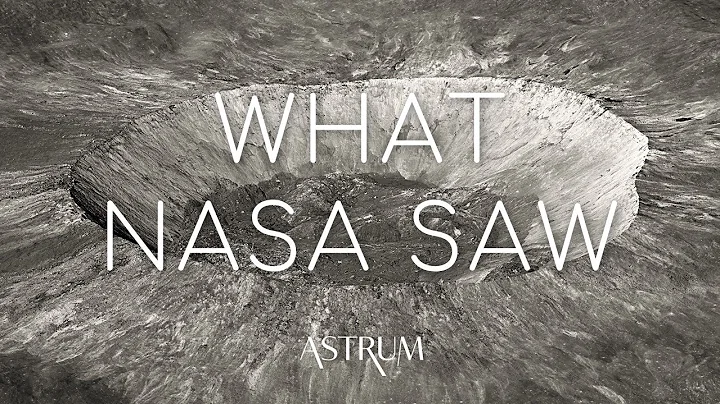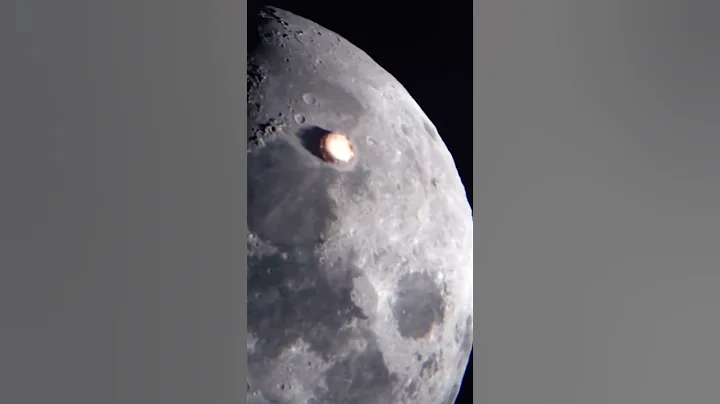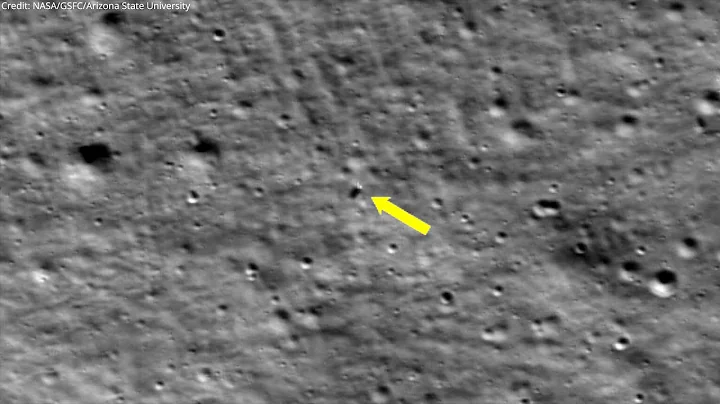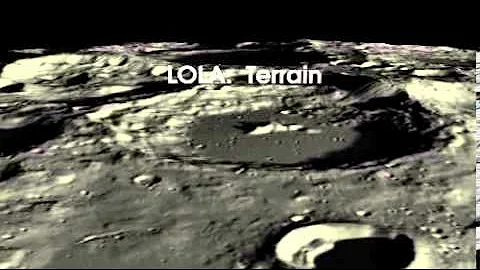
On June 23, the official website of Arizona State University’s Lunar Reconnaissance Orbiter Camera (LROC) published an article stating that project team scientists discovered two large craters in the lunar images, which may be related to previously mysterious space flying objects. This has attracted widespread attention from the international deep space exploration community and news media. There are countless craters on the surface of the moon. Why did these two large craters attract the attention of scientists? What are they caused by? What's so special about it?

Two images capture the "serial pit"
Earlier this year, many domestic and foreign news agencies and online media reported that at 20:25 on March 4, 2022, Beijing time, a flight of unknown origin weighing about 3 tons The object collided with the Hertzsprung crater on the back of the moon at a speed of 9,290 kilometers per hour. However, because the impact point was on the back side of the moon, and there were no lunar satellites over the impact point at the time, people were unable to obtain the accurate location and conditions of the impact immediately.
Recently, the Arizona State University research team made a comparative analysis of two high-resolution images taken before and after the impact event , which were taken by LROC when it passed through the Hertzsprung crater on February 28 and May 21. Not only was the impact confirmed, but it was also unexpectedly discovered that the impact of the unidentified flying object formed two series of impact craters. The 18-meter-diameter impact crater in the east was partially superimposed on the 16-meter-diameter impact crater in the west.

The high-resolution images taken on December 28 and May 21 revealed the destination of the mysterious flying object on the far side of the moon (5.226° north latitude, 234.486° east longitude). Picture source: NASA/GSFC/Arizona State University
Who "trapped" the moon?
What are the flying objects that caused these two "serial pits"? This problem dates back to 7 years ago, and there are several speculations.
1
Near-Earth asteroid?
First of all, this flying object was first discovered by the American Catalina Sky Survey System as early as March 14, 2015. When it was discovered, it was located very high and far away from the earth. It was considered to be a near-Earth asteroid and was given the number WE0913A. However, a Brazilian astronomer analyzed the object's flight path and discovered that the object was in orbit around the Earth, not the sun. Therefore, it is judged that it may not be a natural asteroid, but a man-made space junk.
2
SpaceX rocket wreckage?
Coincidentally, on February 11, 2015, Elon Musk's SpaceX aerospace company had used a Falcon 9 launch vehicle to launch the Deep Space Environmental Observation for the National Oceanic and Atmospheric Administration (NOAA) Satellite DSCOVR. The discovery of this flyer came one month after the launch of DSCOVR, which passed through the lunar-Earth space on February 13, 2015.
Based on this, American astronomer Bill Gray speculated that this flying object should be the wreckage of the Falcon 9 launch vehicle. On January 21 this year, Gray predicted on the astronomical website ProjectPluto that the remains of the Falcon 9 rocket would hit the moon on March 4. That would be the first time that a large man-made space junk accidentally fell on the moon, which immediately attracted great attention from the astronomy and deep space exploration communities.

Falcon 9 rocket carrying DSCOVR. Source: SpaceX
Since the data of flying objects is public, anyone can check Gray’s forecast. After checking the relevant orbital data, an expert from NASA pointed out that DSCOVR is too far away from the moon and the wreckage of its launch vehicle cannot reach the height of the flying object, thus overturning the fact that the flying object is the Falcon. Inferences about the wreckage of Rocket 9.
3
Chang’e 5 launch vehicle wreckage?
After the speculation about the Falcon 9 was overturned, Gray went back to earlier space launch missions. He found that on October 23, 2014, my country used the Long March 3C carrier rocket at the Xichang Satellite Launch Center. launched the mission of Chang'e-5 T1 tester , and believed that this flying object was most likely the remains of the final stage thruster of the Long March 3C rocket that performed that mission.
In this regard, my country’s aerospace industry denied his speculation. Foreign Ministry spokesperson Wang Wenbin made it clear that according to China's monitoring, the final stage of the rocket related to the Chang'e 5 mission has fallen into the earth's atmosphere and was completely burned. Tracking data released by the 18SPC of the U.S. Space Force Space Control Squadron, which specializes in monitoring satellites and space debris, also shows that the final stage of the Long March 3C rocket (international code name 2014-065B) carrying out the CE-5T1 mission has returned in 2015 atmosphere.

The Long March 3C rocket successfully launched the Chang'e-5 T1 mission. Source: Xinhua News Agency
What's so mysterious about the two big pits?
This flying object that crashed into the moon is still a mystery so far, and the "serial craters" formed by its impact on the lunar surface have added a new layer of mystery to it.
Why are the two big pits mysterious? In fact, it is not surprising for rocket debris to fall on the moon. This has happened many times as early as the Apollo era. The debris of rockets carrying American Apollo 13, 4, 14, and 15 have all fallen to the lunar surface. The difference is that usually the rocket debris forms a single impact crater . This is because one end of the rocket body is the engine and the other end is the fuel tank. After the fuel is exhausted, it will be empty. Only the engine end is heavy. Therefore, only one impact crater will appear when the wreckage falls. The flying object hit two craters, indicating that it was probably a guy with two heavy ends. This discovery will bring scientists one step closer to uncovering the true identity of the flying object.


The newly formed conjoined twin impact craters are in sharp contrast to the single impact crater formed when the remains of the Apollo launch vehicle fell to the lunar surface. Picture source: NASA/GSFC/Arizona State University
Read Special+News
The US claimed that the debris of a space rocket came from China’s lunar exploration mission, and the Ministry of Foreign Affairs responded
On February 21, Foreign Ministry Spokesperson Wang Wenbin hosted a regular press conference. A reporter asked: A rocket debris is expected to hit the back of the moon on March 4. The National Aeronautics and Space Administration (NASA) analyzed that the debris may come from the launch vehicle thruster launched by China for the lunar exploration mission in 2014. . What is China’s response to this?
Wang Wenbin said that China has noted recent expert analysis and media reports on this matter. According to China's monitoring, the final stage of the rocket related to the Chang'e-5 mission has safely fallen into the earth's atmosphere and completely burned down. China has always developed its aerospace industry based on international law and effectively maintained the long-term sustainability of outer space activities. We are willing to carry out extensive exchanges and cooperation with all parties in this regard.





















